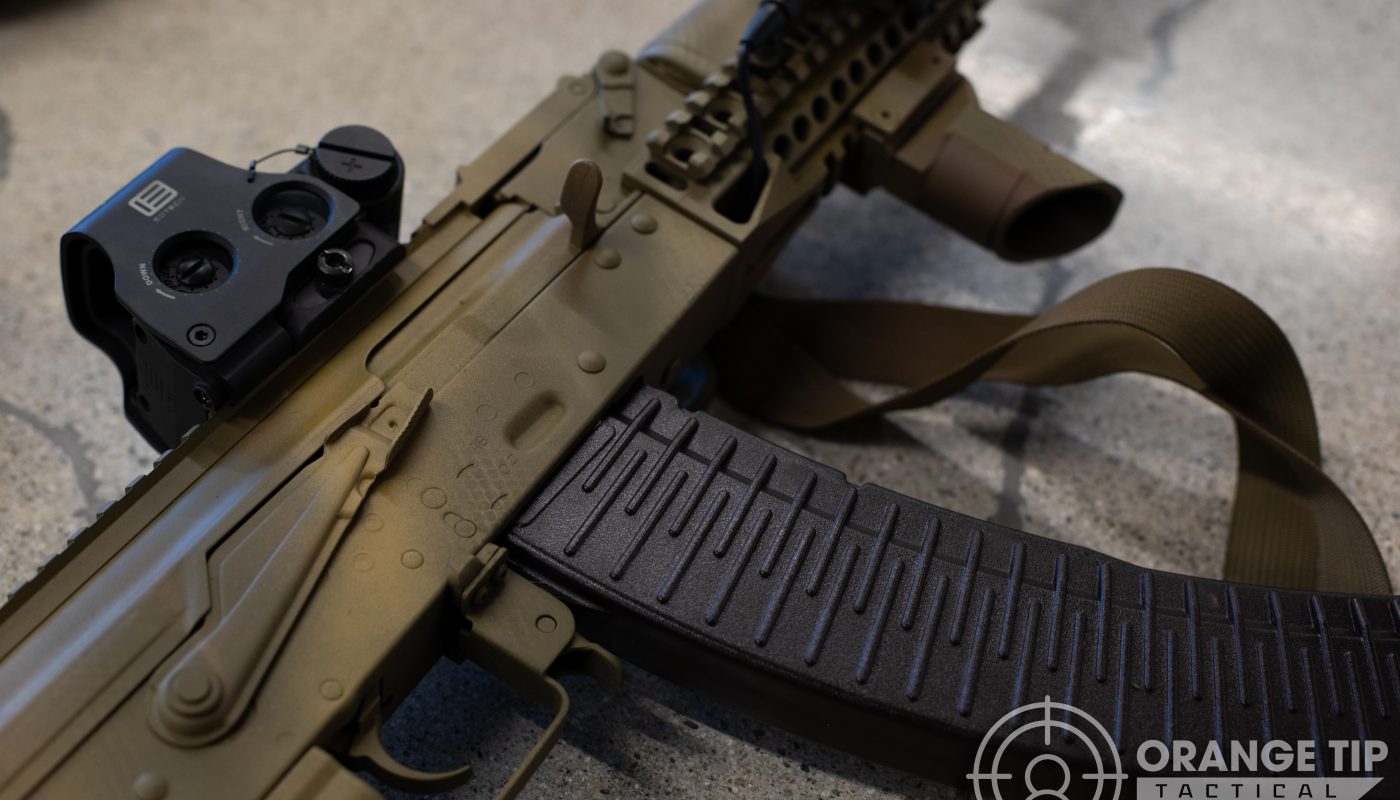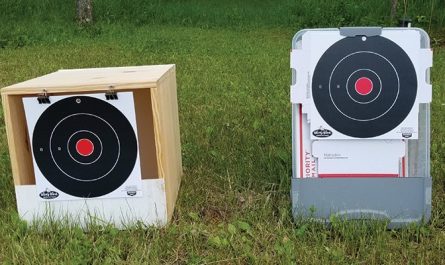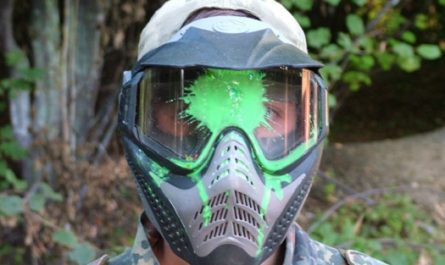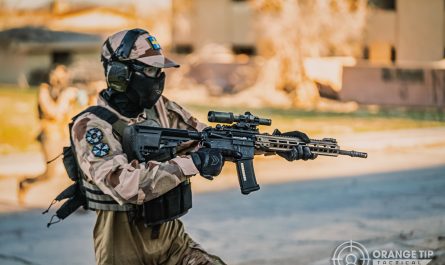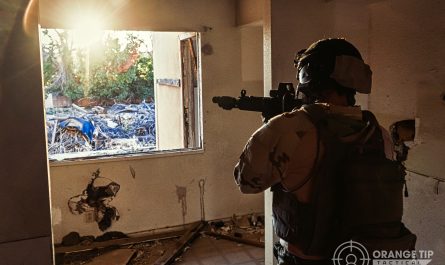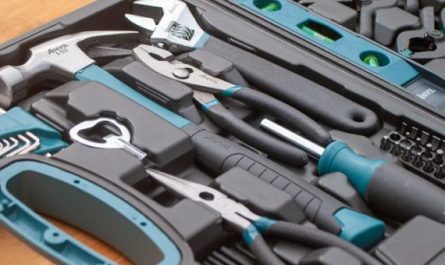Want to give your AEG or GBB a fresh coat of paint, but confused about where to start? Don’t sweat! We’ll walk you through the basics, prep, and some finer points of breaking up your airsoft gun’s natural black silhouette.
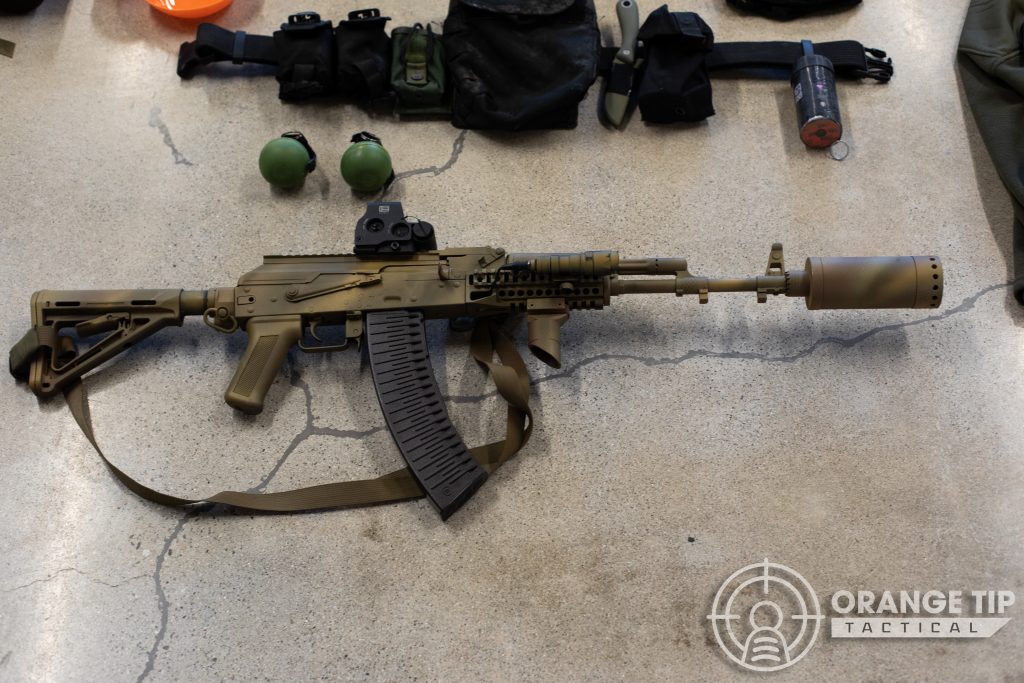
Painting your gun for the first time can be a bit intimidating if you aren’t quite sure how to go about it –and there’s definitely something slightly unnerving about taking those first steps in altering your gun’s sleek, all-black appearance.
However, painting your gun is quite easy once you get the hang of it, and can add both a touch of personal flair and assist with concealment to boot!
Choosing Your Paints
First things first–a word about paints! While many folks like to stick to the standard Krylon flat camouflage line, I personally prefer flat model paints available from Tamiya, Model Masters, and Testors, which you can generally find at any model-oriented hobby shop.
Not only is the range of colors much more varied (compared to Krlyon’s typical khaki, brown and olive drab), but the paints tend to wear much more quickly as well – which is awesome if you’re after that iconic “battleworn” look but want it to occur naturally!
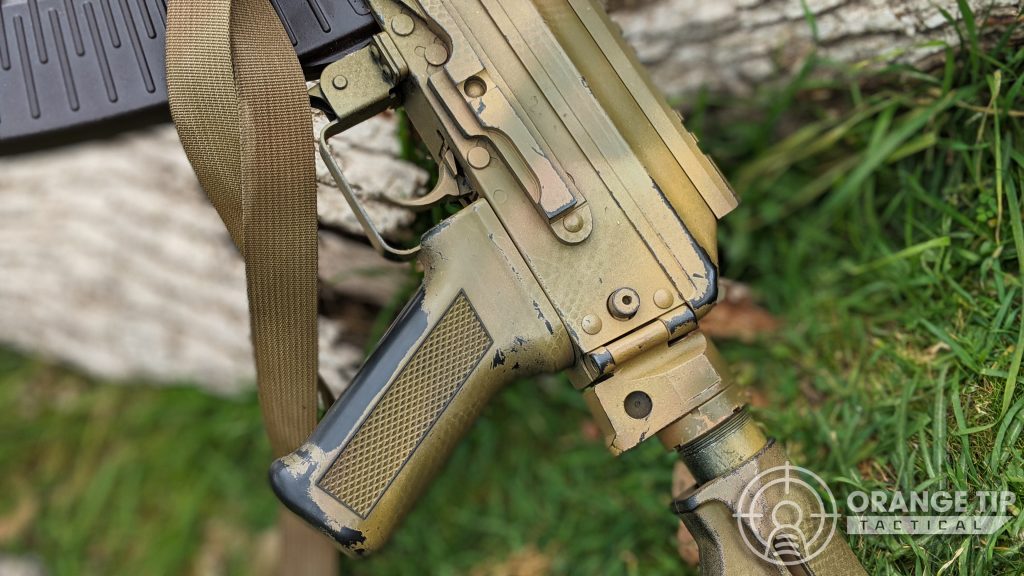
Now that we’ve got out of the way, let’s get started!
What You’ll Need
- The airsoft gun you’re going to paint (duh)
- Your paint of choice (duh)
- Some type of surface to paint on, such as a flat cardboard box
- A mesh laundry bag if you’d like to add a sort of ‘snakeskin’ pattern to your gun
- Standard painter’s tape if you’re concerned about covering up any part of your gun – such as the muzzle, any trademarks you don’t want to paint over, the hop-up unit, etc.
Always start by giving your gun a good wipedown of all exterior surfaces. We want to give the paint the cleanest surface possible to bond to, so make sure you don’t have too much built-up grime or gunk anywhere on your receiver, rails, stock, etc.
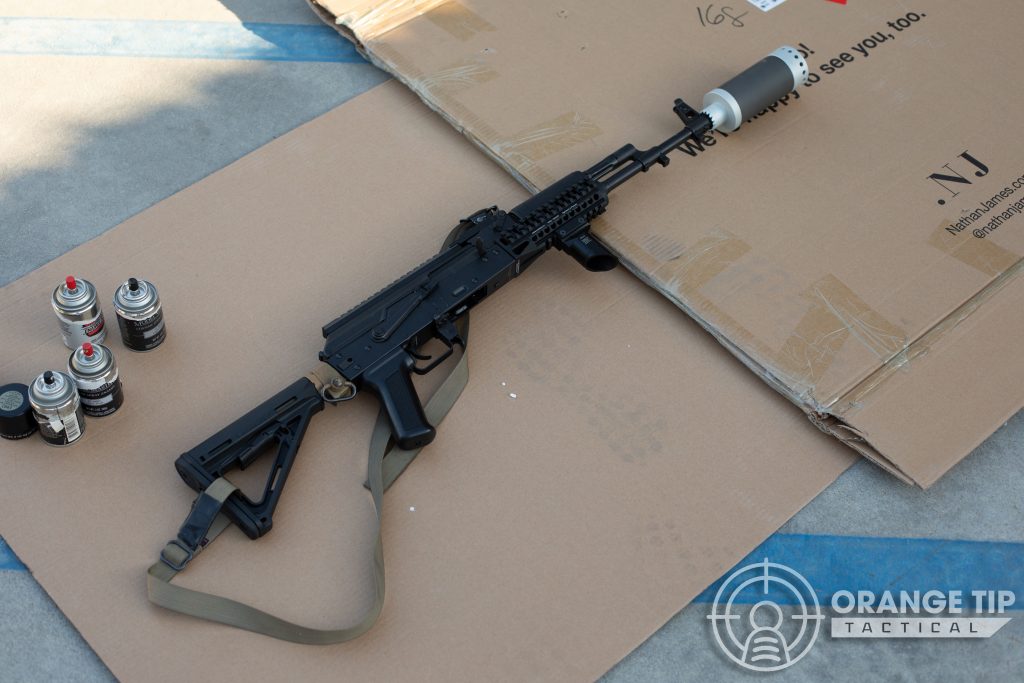
Try to go into your project knowing roughly what kind of pattern you’re aiming for. Personally, I tend to stick to alternating diagonal stripes, but it’s important to lay down a base coat first.
Generally, I like to go from the darkest color in my palette up to the lightest, so my base coat here is going to be comprised of Model Master Light Earth.
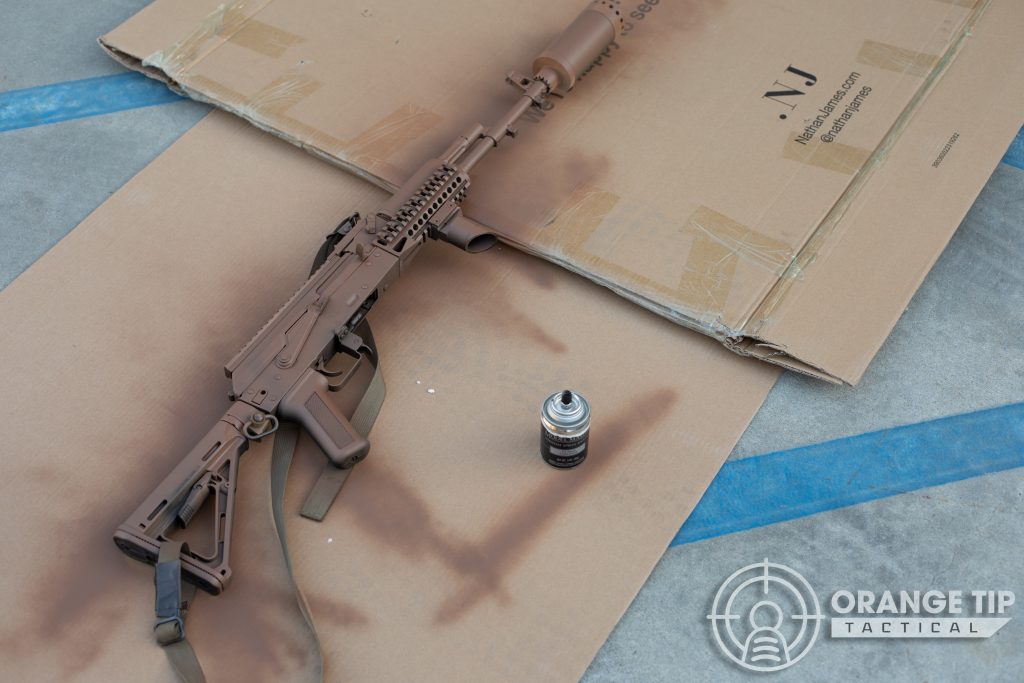
As you can see, there are some parts I didn’t hit very hard, and that’s intentional. The goal is to use short, brisk swiping motions to “dust” the gun to your desired level of color saturation from about ~1-2 feet away from the receiver. Make sure you’re not holding down the spray nozzle and creating pools of paint! A little goes a long way.
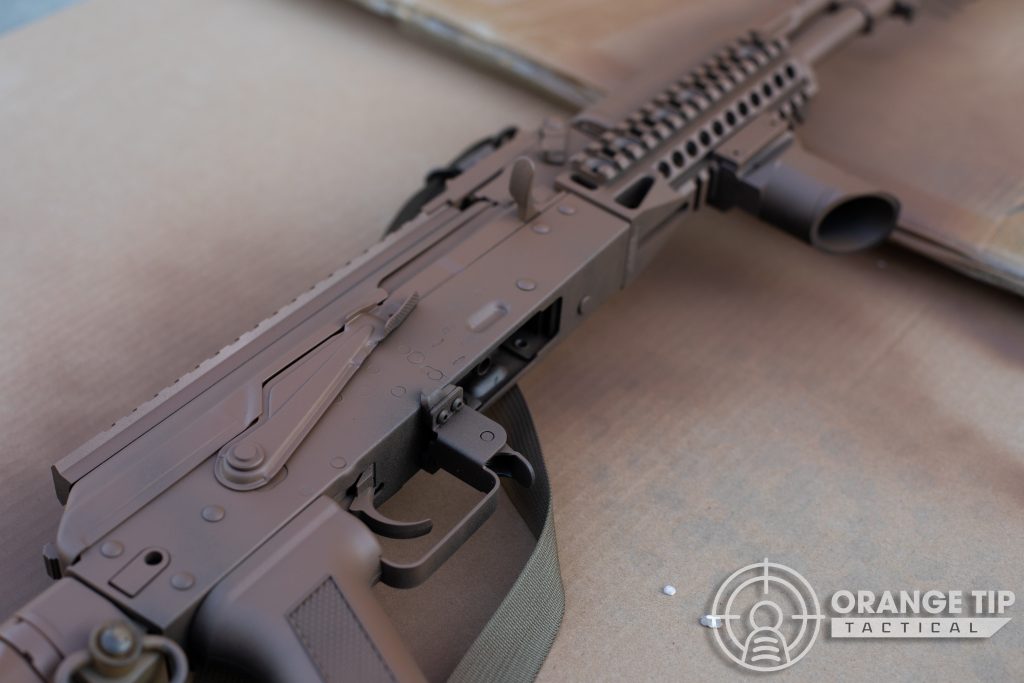
You’ll also notice that I don’t usually bother taping up my magazine well or barrel, but I’ve got pretty good control with the can and am not super worried about it. If it’s your first time, you may want to consider taping these areas off just to give you some peace of mind!
Depending on the temperature of your environment, you’ll want to give the paint ~3-5 minutes to dry before flipping just so that you don’t smudge it.
Now that we’ve got our Light Earth base tone sprayed evenly on both sides, it’s time for some stripes! I chose to go with the next darkest tan in my palette–Model Master SAC Bomber Tan, as it creates a nice contrast between the Light Earth base.
While contrast isn’t generally something you want in a paint job meant to blend in, we’re going to go back and smooth these lines out later, so don’t worry.
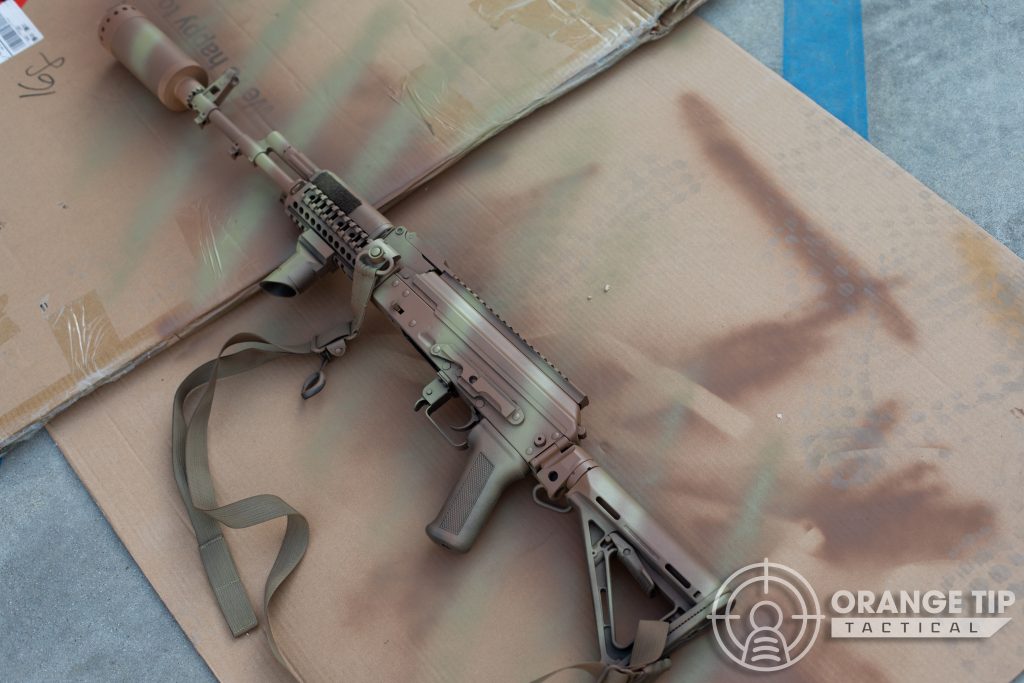
Don’t get caught up too much with the placement of the stripes or making sure that they’re perfectly even–very rarely do you find perfectly geometric shapes within nature, and presumably, you’ll be attempting to hide within a natural environment, so have fun with it!
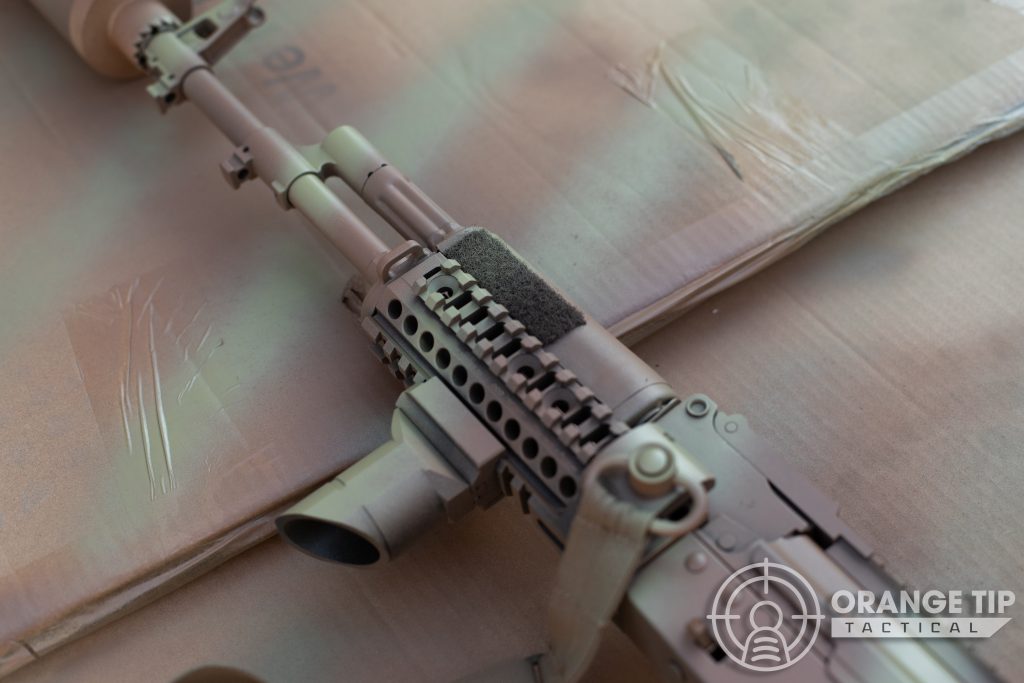
I usually work from the rear towards the muzzle of the gun, using the same brisk swipes to create diagonal disruptive lines that also lean towards the muzzle. This is what I find works best for me, but again, experiment!
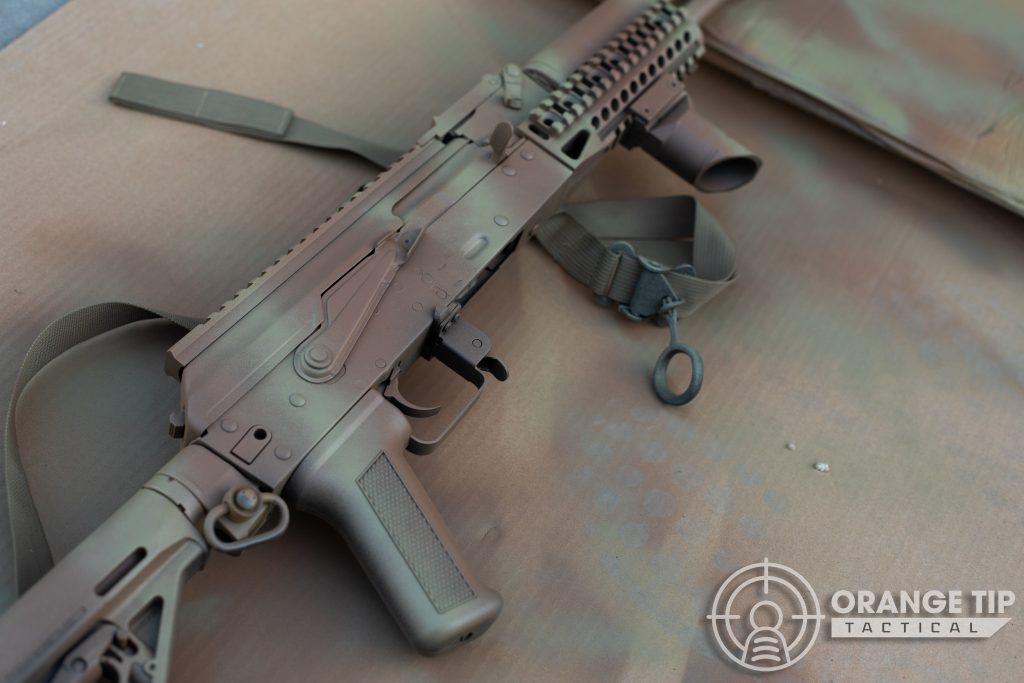
I’ll usually try to match up my stripes on the opposite side of the receiver, which makes adding connective splashes of color across the top plane of your rifle much easier than doing it in reverse, as seen below.
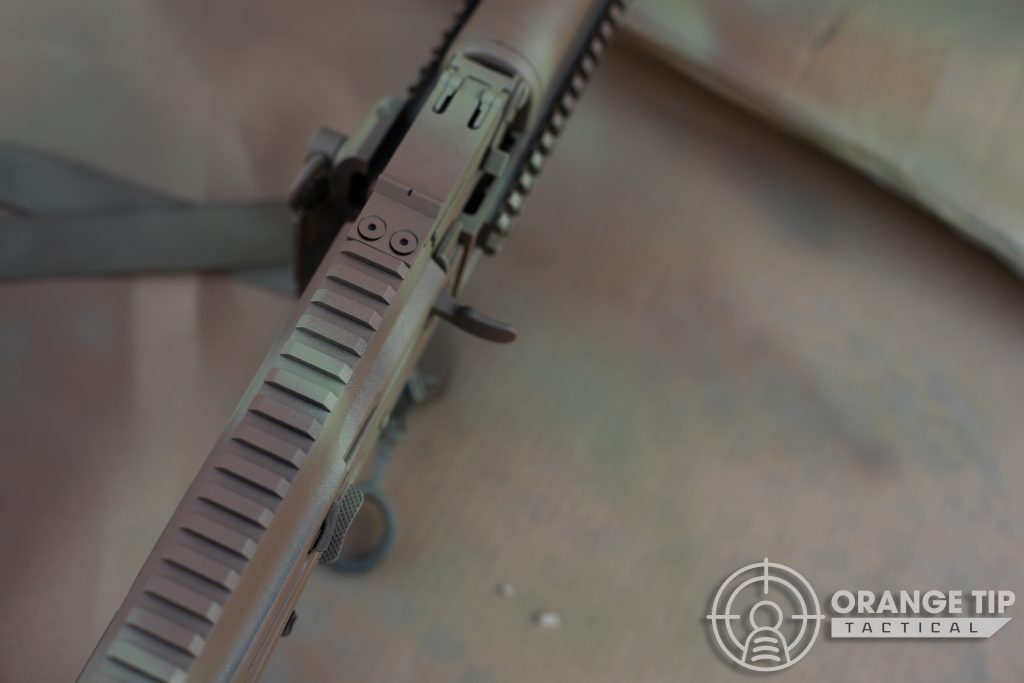
Now that we’ve got our basic framework out of the way, it’s time to start working in our primary colors!
This gun was painted specifically to blend into the environment of the Hill 559 airsoft field in Clovis, California for Milsim West’s Road to Kharkiv event. As Hill 559 generally tends to be quite green this time of year, we’re going to make this a primarily green rifle–but there are obviously many other naturally occurring colors even in a green-dominated environment.
We start with our ‘earthy tones’ first and add greens on top, as it’s roughly similar to the way these colors present out in the wild.
Time for green! I’m using Model Master Olive Drab for this portion, as I quite like that it’s a lot closer to a vintage military green than your standard Krylon colors, which tend to be a bit too dark for my taste.
This is also where we’ll start using our mesh laundry bag to begin creating a “snakeskin” pattern on the rifle. Make sure you’ve got your bag as flat as possible if you want crisper lines, and further away if you’d like them a bit fuzzy. Play around and see what works for you!
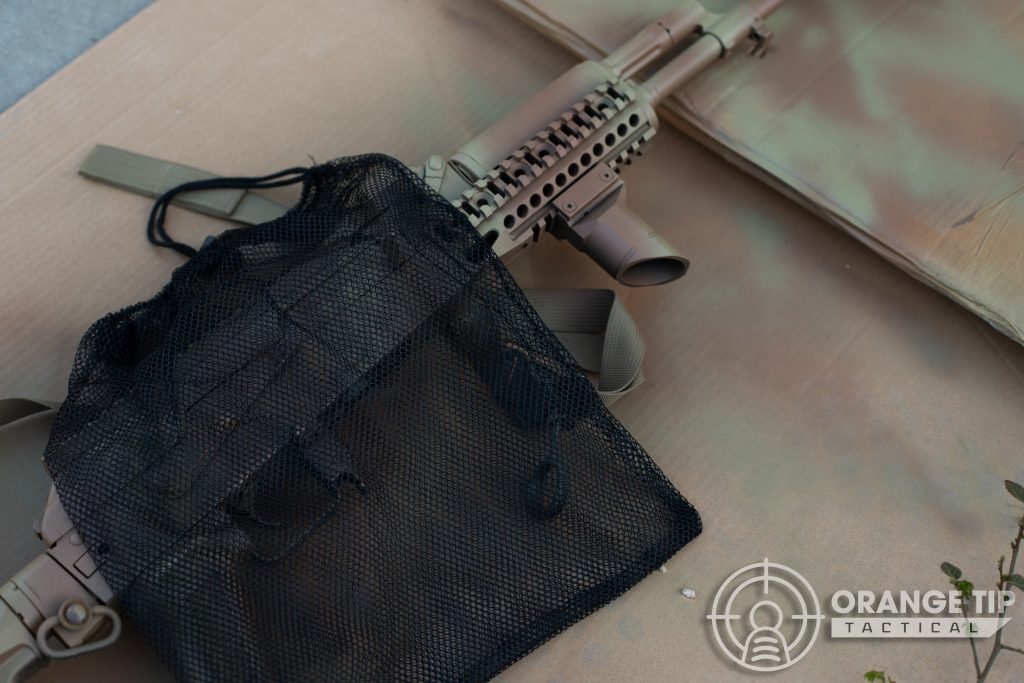
I like to use our olive drab to begin “blending” the space between our light earth base coat and tan stripes. This reduces contrast overall and will help with breaking up the gun’s shape.
You can also then ditch the bag and add some further green dusting along the edges of the snakeskin pattern so that your green layer fades in and out of the pattern. This should help ensure that no one particular area is going to draw too much attention to the eye.
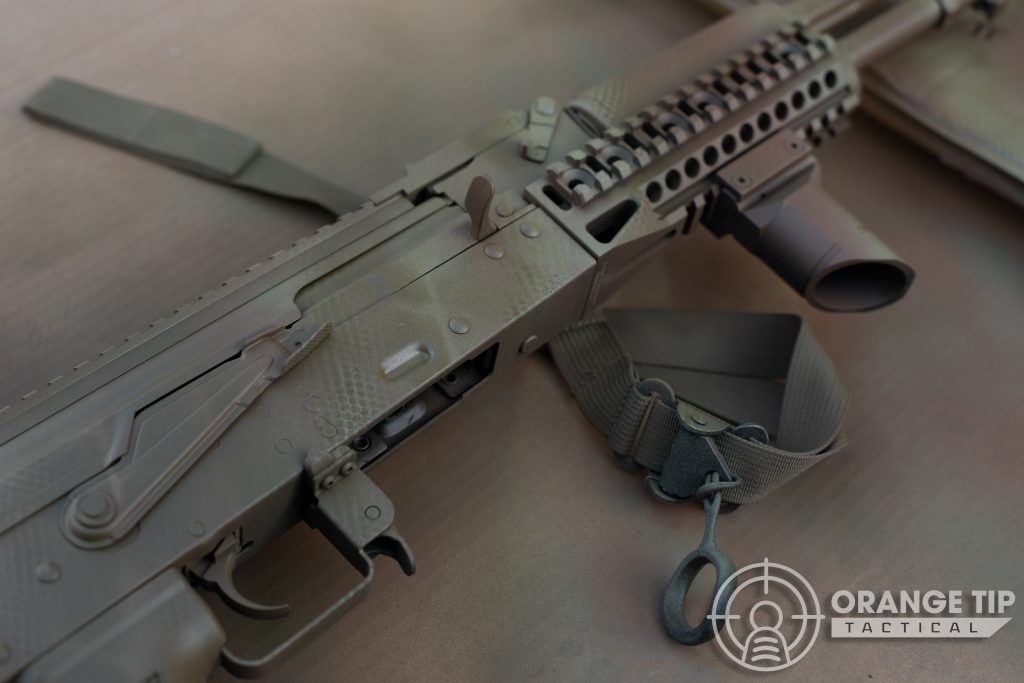
I then applied the same process to the other side of the receiver, getting a little bit more liberal with the application of the olive drab as the whole pattern starting coming together. Again, there are no rigid rules here, and experimentation is always going to yield the best results.
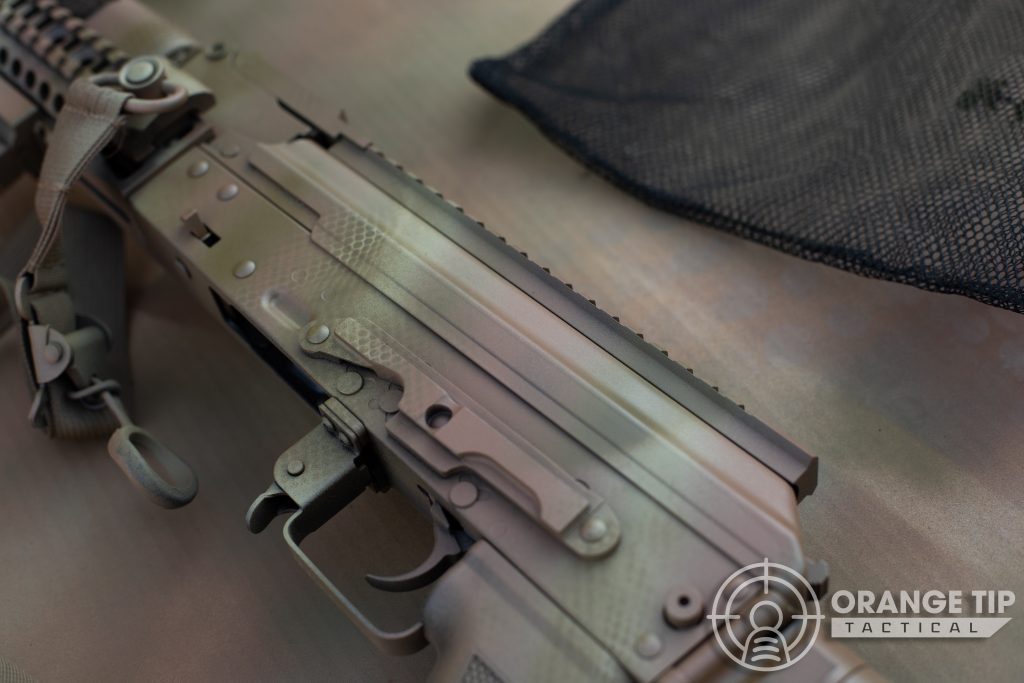
You can go as heavy or as light as you want in the application of the pattern! I personally tend to think something a bit more subdued that sort of picks up and disappears on top of our base colors looks best.
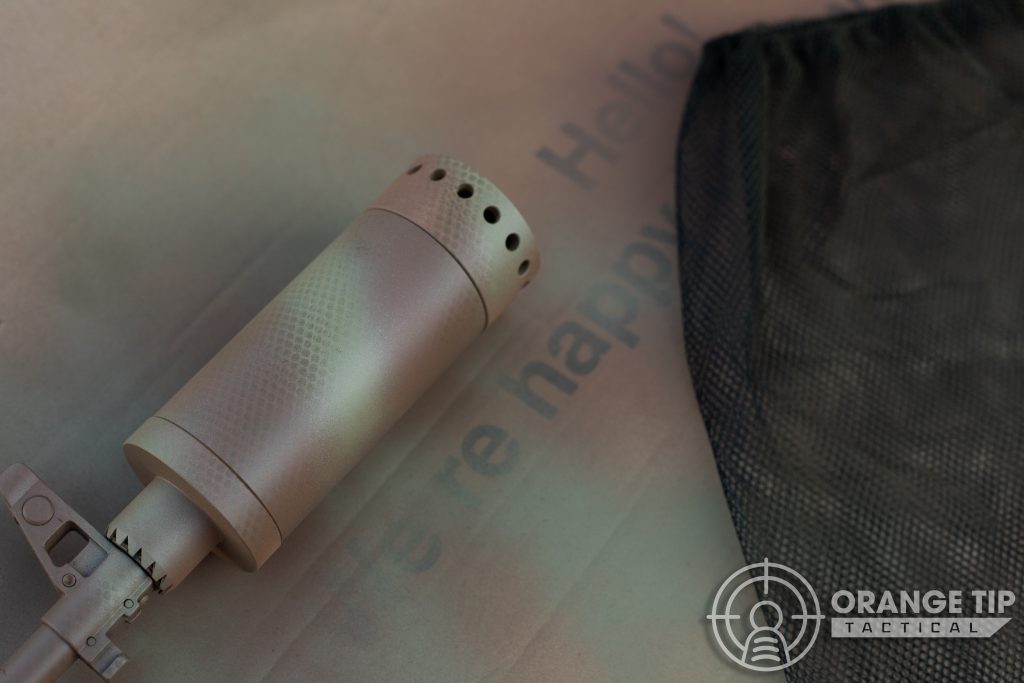
Finally, we’re going to add one of my favorite colors to paint with overall–Model Master Afrika Mustard! While the sort of obnoxiously bright yellow doesn’t blend into much on its own, it does a pretty great job of simulating the tone of dead underbrush when mixed into an existing palette, and that’s exactly what we’re going to do here.
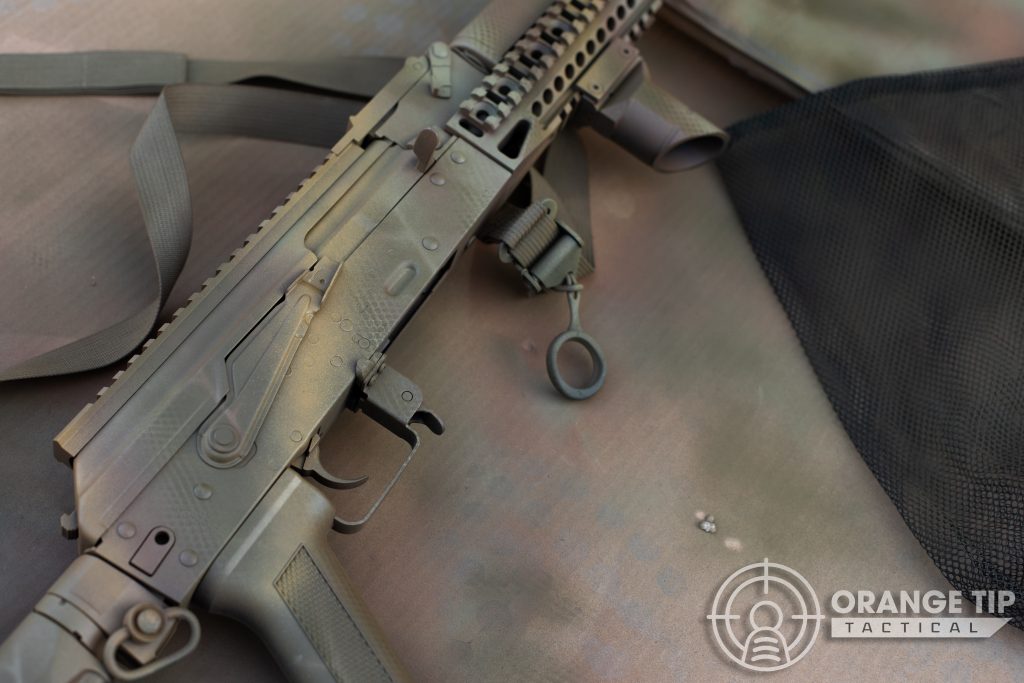
Using the same idea as before, we’re going to “split the difference” and use the Afrika Mustard to begin blurring the lines between our existing colors so that they begin to flow pretty seamlessly into one another. Compared to our previous striping layers, you’ll likely want to be a bit lighter here – the goal is a nice, subtle “dusted” effect more than a bold, obvious line.
Keep blending!
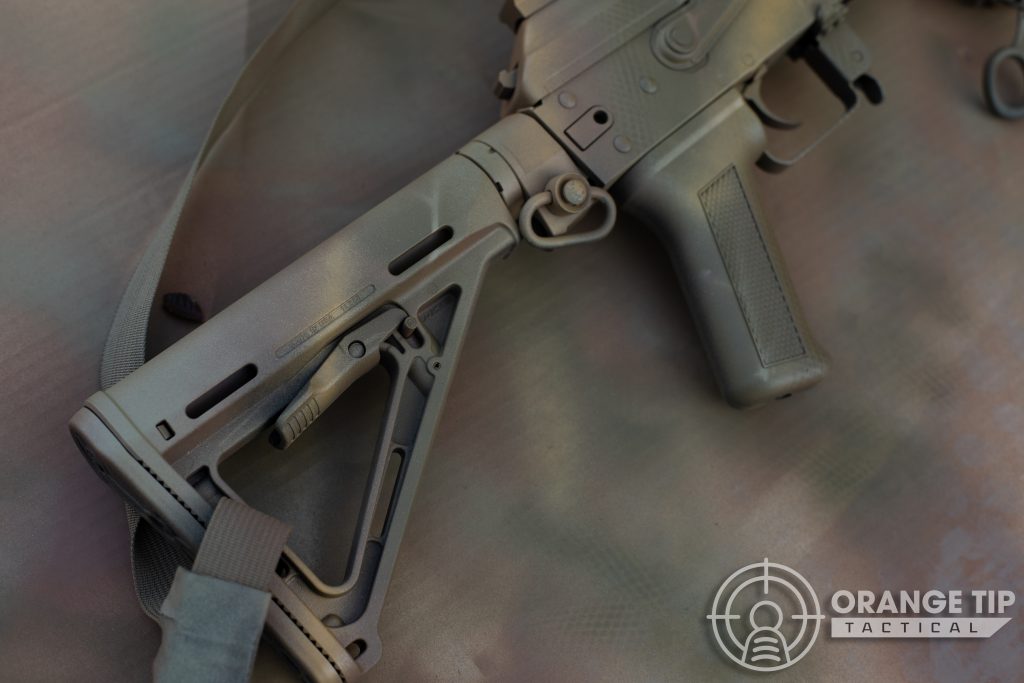
By all means, don’t feel limited to sticking with lines facing the same direction! As I’m nearing the end of the paint job here, I began adding more splashes of color here and there just to break up any area that felt oversaturated with a dominant color, if that makes sense.
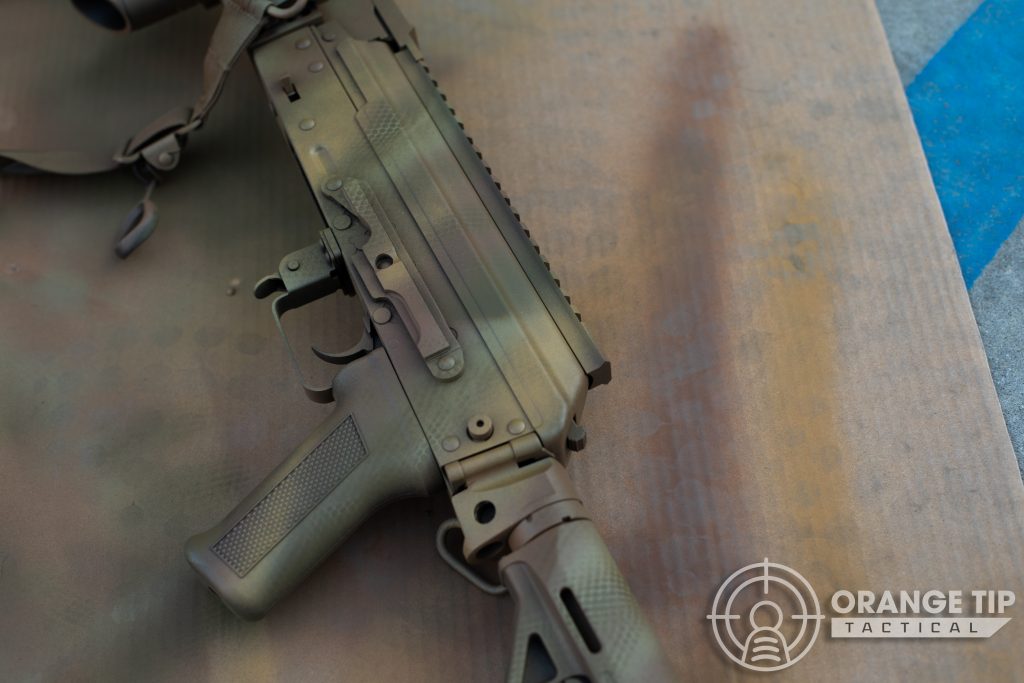
There really are no rights and wrongs here, and I can’t emphasize that enough. You’ll know your environment better than anyone, and what color palette and pattern is going to work best within it. This wound up being my finished product after my final blending process. I’m pretty happy with it!
The indoor lighting also does a bit better of a job at capturing the paint job’s true color tone than our outdoor, sunset lighting–so maybe this gives you a better idea of what I was going for:
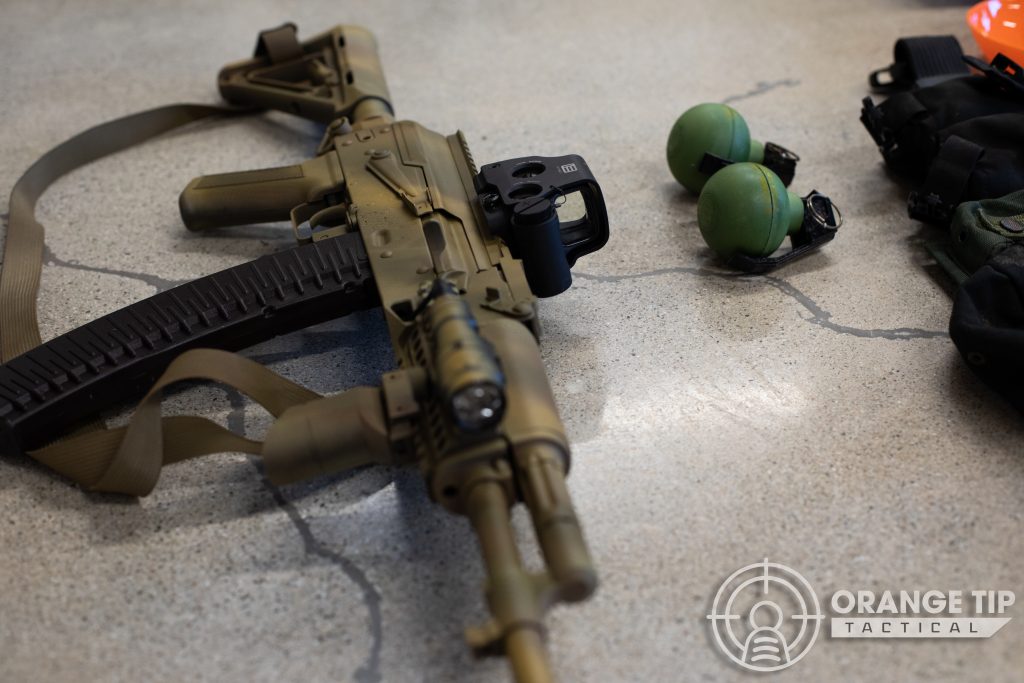
And lastly, here’s a shot from the field and event this gun was painted for, just for good measure!
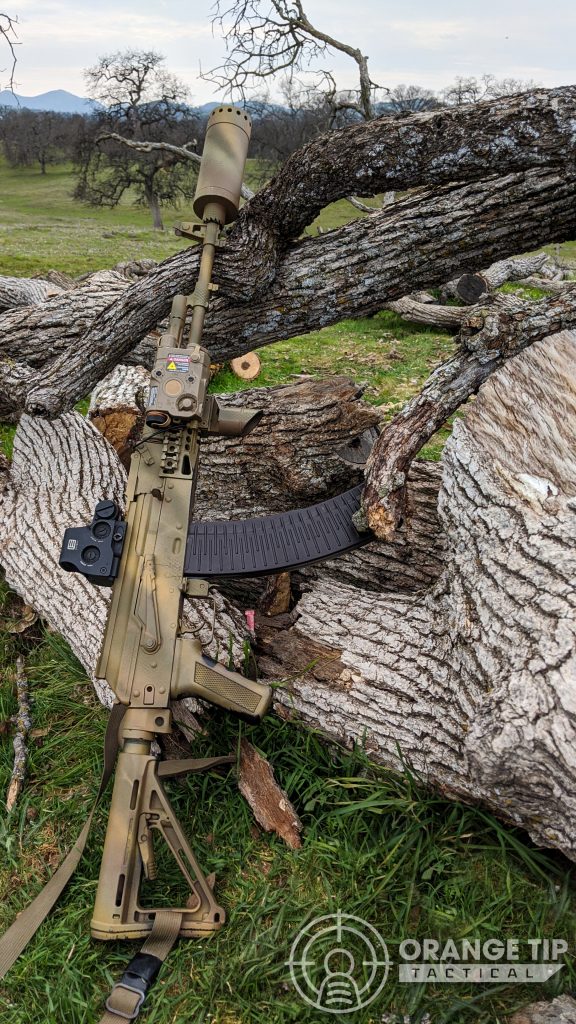
Was this guide helpful? How did your paint job come out? Let us know below! Getting ready for your first milsim event? Check out our milsim basics guide!

